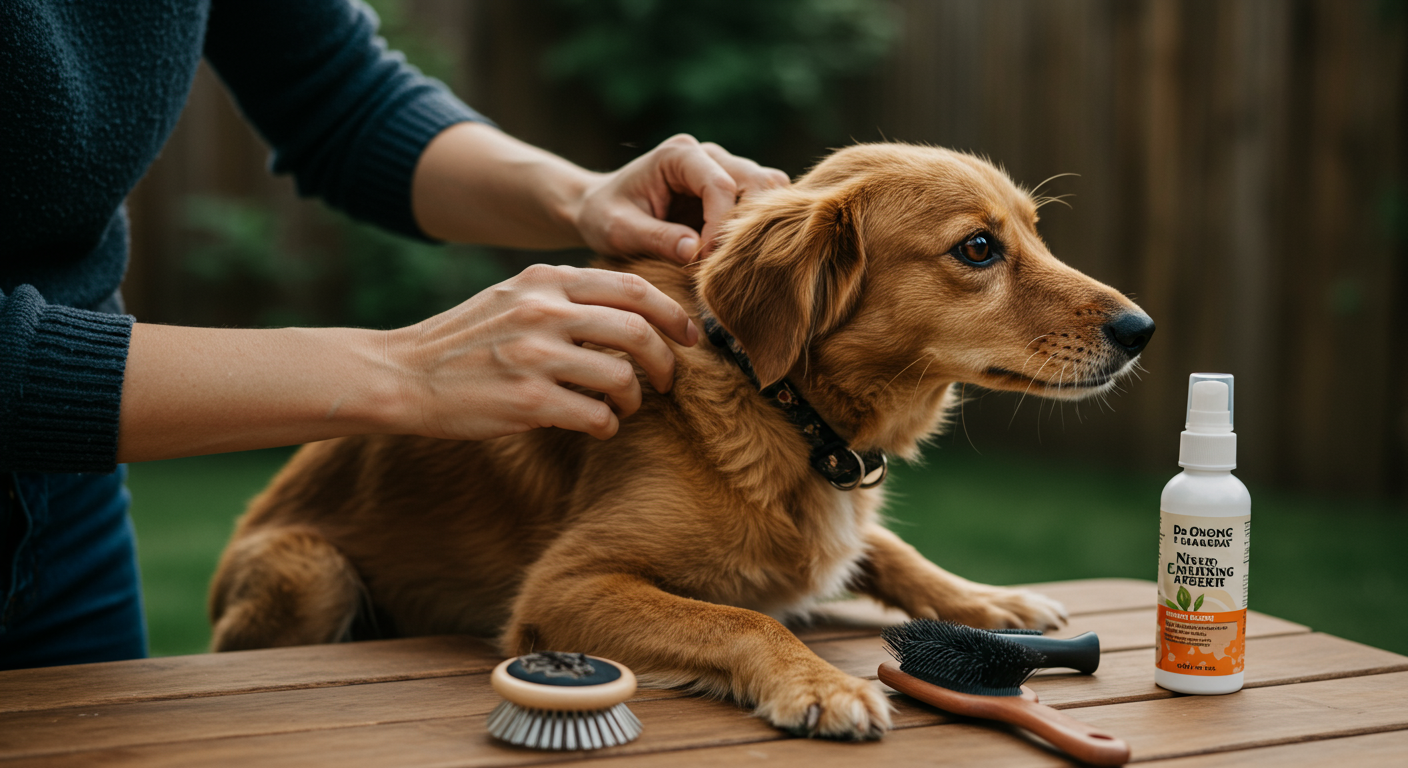As experienced pet parents, you understand the importance of proactive health measures. Fleas and ticks are more than just a nuisance; they pose serious health risks to your beloved dogs and cats. This guide offers advanced strategies for natural flea and tick prevention, focusing on safe, effective methods to keep your pets healthy and happy.

Deep Dive into Natural Flea & Tick Prevention
Fleas and ticks thrive in specific environments. Preventing their presence involves a multi-pronged approach. This means understanding where these pests lurk and how to create a safe zone around your pets. This includes not only your pets themselves, but also the areas where they spend their time, like your home and yard.
Advanced Strategies and Insights
1. Natural Repellents: Your First Line of Defense
Essential Oils: Certain essential oils, like cedarwood, lavender, and peppermint, are known to repel fleas and ticks. Always dilute essential oils properly and NEVER apply them directly to your pet's skin without consulting a veterinarian. You can find natural sprays containing these oils, formulated for pet use.
- Safety Note: Always perform a patch test on your pet before applying any new product. Start with a small area to check for any adverse reactions.
2. The Power of a Healthy Pet
- Balanced Diet: A well-nourished pet has a stronger immune system, making them less susceptible to parasites. Feed your pet a high-quality diet appropriate for their life stage and breed.
- Supplementation: Consider supplements like brewer's yeast or garlic (in moderation and with veterinary approval), which may help deter fleas and ticks.
3. Yard Maintenance: Creating a Tick-Free Zone
- Regular Mowing: Keep your lawn mowed short to reduce tick habitats.
- Remove Debris: Clear away leaf litter, tall grasses, and brush piles where ticks may hide.
- Use Natural Yard Sprays: Consider using natural yard sprays containing cedar oil or beneficial nematodes. (Always follow product instructions.)
4. Regular Grooming and Inspection
- Frequent Brushing: Brush your pet regularly to remove any fleas or ticks and to distribute natural oils that can help repel pests.
- Tick Checks: After walks, thoroughly inspect your pet for ticks, paying close attention to areas like the ears, between the toes, and under the armpits.
- Tick Removal: If you find a tick, remove it promptly using a tick removal tool. Grasp the tick as close to the skin as possible and pull straight out. Clean the bite area with antiseptic.
Case Study: Achieving a Flea-Free Home
- Scenario: A pet parent noticed their dog was constantly scratching and found fleas. After implementing the above strategies, including regular grooming, a natural flea repellent spray, and yard maintenance, the pet parent saw a significant reduction in flea activity within a month.
Navigating Complex Pet Challenges
- Allergies and Sensitivities: Some pets may have sensitivities to certain natural repellents. Always introduce new products gradually and monitor for any adverse reactions.
- Concurrent Medications: If your pet is on any medications, consult your veterinarian before using natural preventatives, as there could be interactions.
Integrating Advanced Care Practices
- Create a Flea & Tick Prevention Calendar: Schedule regular grooming, yard maintenance, and preventative treatments.
- Educate Yourself: Stay informed about the latest research and best practices in natural flea and tick prevention.
Long-Term Wellness & Longevity Tips
- Year-Round Protection: Fleas and ticks can be active year-round, depending on your climate. Maintain preventative measures consistently.
- Consult Your Veterinarian: Regular check-ups are crucial for early detection of any health issues related to fleas and ticks. Your vet can also provide personalized recommendations based on your pet's needs.
Expert-Level Pet Care Insights
- Holistic Approach: Combine natural preventatives with conventional methods, under veterinary guidance, for the most effective results.
- Environmental Control: Ensure your home and yard are inhospitable to fleas and ticks by addressing the root causes of infestation.